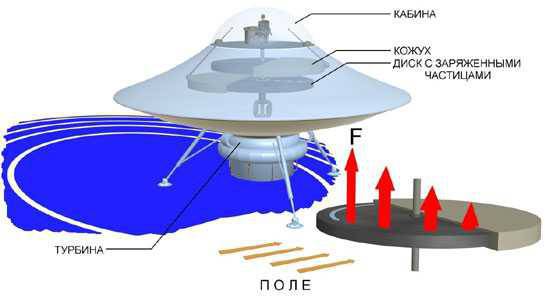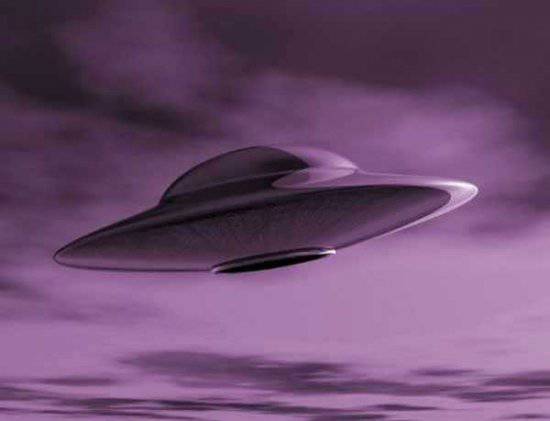Flying saucer of the USSR
... Wheels were spinning wildly. The pilot cautiously pulled the levers - on each disk, from the side, the casing slowly crawled, and the device, similar to an overturned plate, started, and smoothly went up. No screws or jets! The body of the machine is completely sealed. Due to what appeared lift? Surely at the expense of internal forces?
No, our apparatus is not "Dyne's machine". When flying, it relies on the Earth’s magnetic field (its intensity varies from 0,4 oersted over the equator to 0,7 oersted over the poles). The discs are made of durable insulator, in which the smallest particles of metal are scattered. Outlining a circle, each particle is affected by the field.
Calculate the current force F is not difficult - by the well-known "left-hand rule". When a particle moves perpendicular to the direction of the field, this force is maximal; when in parallel - disappears altogether. For a round of metal dust, F reaches twice the maximum value and decreases twice to zero. In the "flywheel" (diameter 6,5 m and thickness 15 cm) such dust particles (diameter 10-7 cm) are so numerous that the total thrust reaches an impressive value. However, the forces on the semicircles of the disk are directed in opposite directions. This is where the casing comes in handy. It is made of superconductor or transformer steel. A superconductor “repels”, and steel, on the contrary, “sucks” a magnetic field. But in this and in another case, the housing cavity is shielded from the field of the planet. The casing separates the half-disc from the field. On the uncovered part of the "flywheel" acts a constant thrust. In order to balance the system, the turbine rotates two "movers" in opposite directions.

At 1000 rpm, the lifting force, according to my calculations, will be tens of tons. This is quite enough for the movement of the apparatus in the atmosphere and near-Earth space.
By speeding up or slowing down the rotation of the disks, differently covering them with covers, it is possible to change the thrust (and, consequently, the speed of the “saucer”) over a wide range. And "choosing" field lines of force with the desired direction, you can force the device to fly in any direction.

Information